Unflappable. Unapologetic. Unequaled.

This story appears in the July 15, 2019, issue of Sports Illustrated. For more great storytelling and in-depth analysis, subscribe to the magazine—and get up to 94% off the cover price. Click here for more.
Which Megan Rapinoe pose did you prefer? Was it the one with her arms outstretched like a marble statue in the Louvre, aka The Purple-Haired Lesbian Goddess, that we saw after her goals against France in the Women's World Cup quarterfinals and against the Netherlands in Sunday’s final? Or was it the pose we saw on her Instagram, the one with her arms overflowing as she held a preposterous trio of Women's World Cup trophies for the tournament title, the Golden Boot (top scorer) and the Golden Ball (MVP)?
Or maybe pose isn’t the right word? That would imply something artificial, which is the last way you’d describe Rapinoe’s month-long tour de force during the U.S.’s second straight Women's World Cup title run, the fourth in the team’s glorious history. Rarely in the annals of sports have we seen an athlete at the highest level talk the talk—and did she ever, demanding equal pay for women’s players, increased investment in the women’s game and greater respect for the LGBTQ, African-American and other minority communities—and then walk the walk, even with President Donald Trump calling her out on Twitter.
“Megan should WIN first before she TALKS! Finish the job!” Trump tweeted on June 26 after a months-old video of Rapinoe saying, “I’m not going to the f—king White House” if the U.S. team was invited was published and went viral. Two days later, after standing her ground in a press conference, Rapinoe responded on the field by scoring both goals in the Americans’ 2-1 victory over the host French, the defining win that made another trophy possible. Three times in the knockout rounds, Rapinoe faced the ultimate pressure of taking a penalty kick for her country in the World Cup. Three times she converted, including on the game-winning goal at the final in Lyon. By Sunday, even Trump backed off, tweeting: “America is proud of you all!”
We’ll go there. Muhammad Ali is a singular figure in American life. But there are elements of a modern-day Ali in Rapinoe’s stance toward sports and social activism, to say nothing of her ability to turn the glare of publicity—much of it controversial—to her advantage. Who else would say with glee that she was looking forward to a “total s—tshow circus” in a World Cup quarterfinal and then make the most of it when it happened?
“I’m made for this,” the 34-year-old Rapinoe said after the final. “I mean, I love it. Obviously, getting to play at the highest level in a World Cup with a team like we have is just ridiculous. But to be able to couple that with everything off the field and to back up all those words with performances and back up all those performances with words, it’s just incredible. I feel like this team is just in the midst of changing the world around us as we live, and it’s just an incredible feeling.”
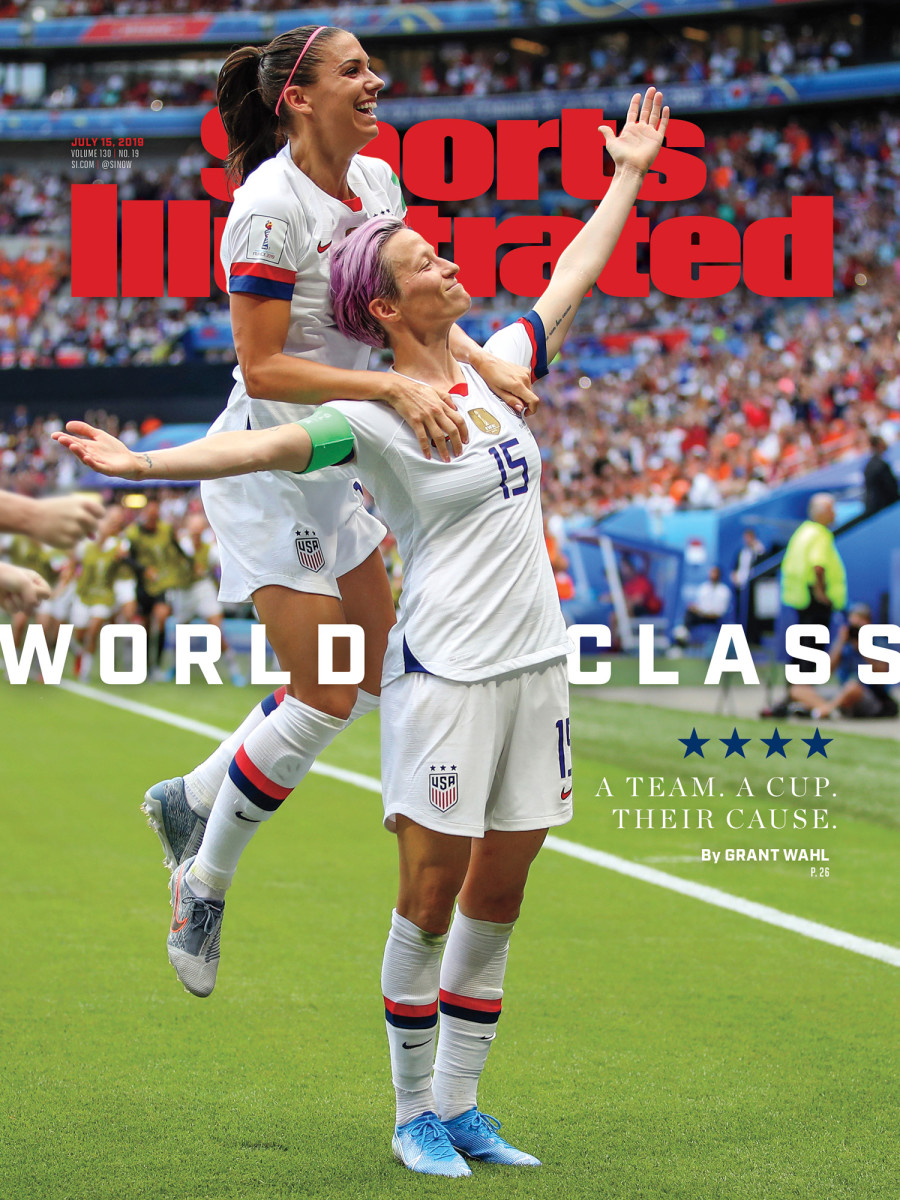
The U.S. players are in the midst of suing the U.S. Soccer Federation for gender discrimination—though both sides have agreed to try mediation first—and in the heady moments after Sunday’s final whistle, the American Outlaws supporters group engaged in a lusty chant of "EQUAL PAY! EQUAL PAY!" The chorus rang through the stadium as Rapinoe accepted her awards and shared conversations with FIFA president Gianni Infantino, French president Emmanuel Macron and U.S. Soccer president Carlos Cordeiro.
🗣 EQUAL PAY #USWNT pic.twitter.com/hQMGz6q54H
— Mina Park (@minapark) July 7, 2019
Rapinoe knows her power, knows that she has to win to maximize it, and she isn’t afraid to push the envelope deploying her influence.
“Everyone’s asking what’s next and what we want to come from all this,” she said. “And it’s to stop having the conversation about equal pay and ‘Are we worth it?’ and ‘Should we?’ and the investment piece. What are we going to do about it? Gianni, what are we going to do about it? Carlos, what are we going to do about it? Everyone. It’s time to sit down with everyone and really get to work. This game has done so much for all of us. We’ve put so much into it. It’s a testament to the quality on the field, and I don’t think everything else is matching that. So how do we get everything to match up and continue to push this forward? Because I think at this point the argument that we have been having is totally null and void.”
So thoroughly did Rapinoe back up her talk on the field that you half-wondered if she was impervious to the cascading criticism she was receiving from one side of a divided country, whether it was over her 2016 decision to take a knee during the national anthem in support of Colin Kaepernick’s protest over police treatment of black Americans (U.S. Soccer later passed a rule requiring standing) or over her continuing protest of refusing to sing the national anthem or put her hand over her heart. But no, she’s human.
“Megan actually is very sensitive,” her twin sister, Rachael, said last week when asked how Megan responded in private to Trump’s tweet. “But in regards to her profession she’s very good at compartmentalizing, so she doesn’t really get too rattled. I definitely gave her a lot of space. She wasn’t talking about it a lot, so I could tell she was trying to process it and not be too affected by it. When everything went down in 2016, at the time we had a different president. But now she’s not even protected by her own president. That’s something that’s almost surreal to me, that we have a president of the United States that’s essentially going after my sister, but also kind of the team, too.”
But what a team these 19ers were. One of the greatest sports teams of all time? Probably. The most meaningful team in history? Perhaps, considering all the things the 19ers have represented to different people. The greatest U.S. women’s soccer team ever? Oh yes, certainly.
“I do think this is a team that across the board is the best we’ve seen,” said no less of an authority than two-time U.S. World Cup champion Julie Foudy of ESPN. This was the first USWNT to win back-to-back World Cup titles and reach three finals in a row. Until the last game, it had scored in the first 12 minutes of every World Cup match in France before it. The U.S. won every game in its romp to the trophy, outscored its opponents 26-3, led for 442 of 630 minutes and never trailed. There was a raft of stories written during this tournament about the rest of the world catching up to the U.S., but that isn’t entirely true. While Europe is certainly improving, the U.S. is getting better too, maybe even at a faster rate.
It would be easy to view the U.S.’s dominant run through this World Cup as an ass-kicking inevitability, a constant march onward and upward to back-to-back titles. Here we go again. But the journey over the past four years was anything but easy. In 2016, the U.S. suffered a quarterfinal elimination in the Olympics to Sweden—the U.S.’s earliest exit ever from a major tournament—in which Rapinoe, on the wrong side of 30 and not at full strength after a knee injury, looked like she might be finished on the international stage. Then in 2017, vowing to unlock more creativity in the attack, Ellis launched a period of experimentation (with formations and new players) that proved an old adage: Real change can be an ugly and uncomfortable process long before it becomes glorious.
The grimmest night of all was March 8, 2017, at the SheBelieves Cup in Washington, D.C.’s RFK Stadium, when a thoroughly disjointed U.S. team went down 2-0 after nine minutes to France and ultimately lost 3-0. With Rapinoe not being called into the team in the wake of her taking a knee, Ellis tried a 3-4-3 formation, left several regulars on the bench—including Alex Morgan, Julie Ertz, Crystal Dunn, Lindsey Horan and Kelley O’Hara—and produced a result that left U.S. fans and media howling after two home defeats in the three-game tournament.
“I remember thinking after that loss that we had a long way to go,” O’Hara said last week. “But that’s kind of a good thing, you know? You don’t ever want to feel like it’s easy all the time and there’s no obstacles or need for growth. After 2016, [Ellis] put out a statement saying I’m about to put this team through an evolution that I feel is necessary to win us a World Cup in 2019. And as hard as that was—it was hectic and stressful and full of uncertainty for a lot of people—it was necessary. I respect her a lot for doing that and sticking to her guns, and I respect the individuals on this team and how we handled ourselves through that time.”
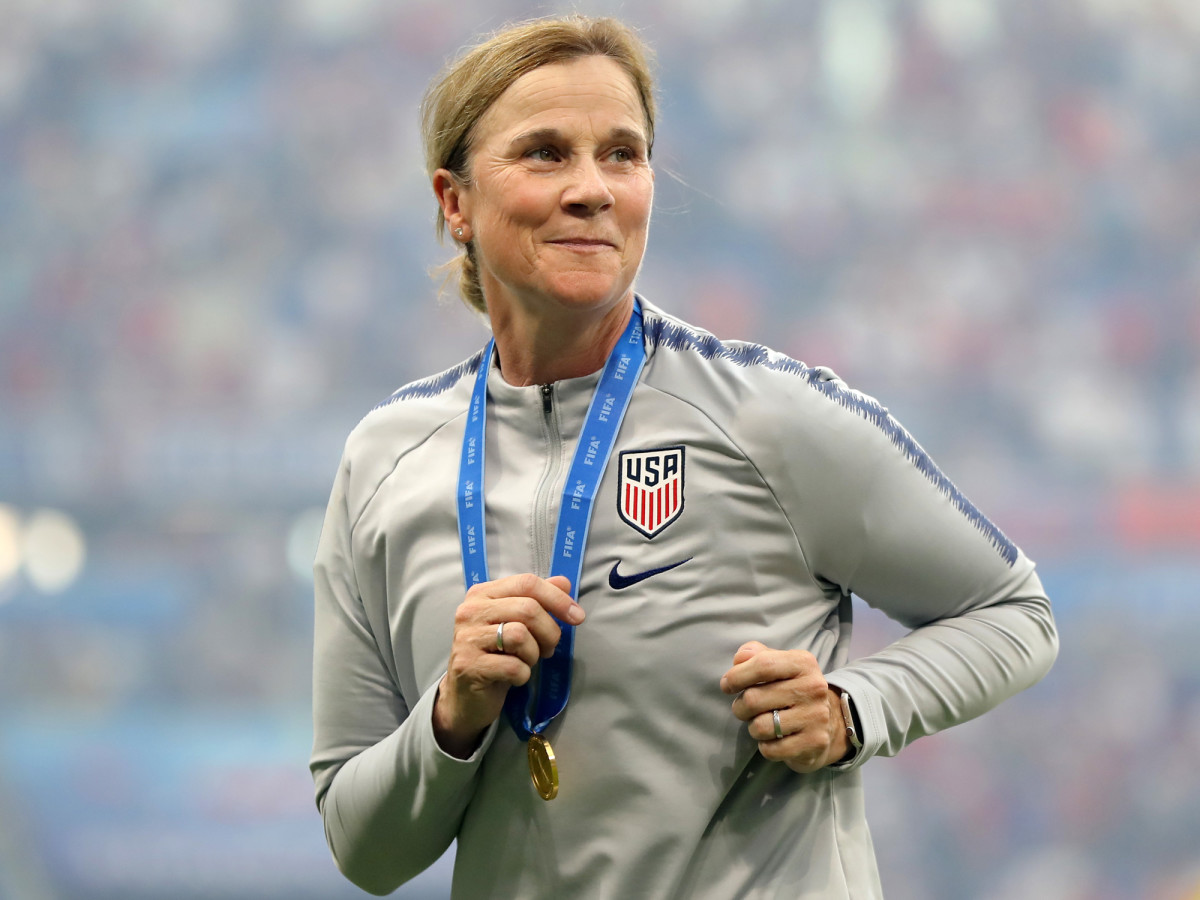
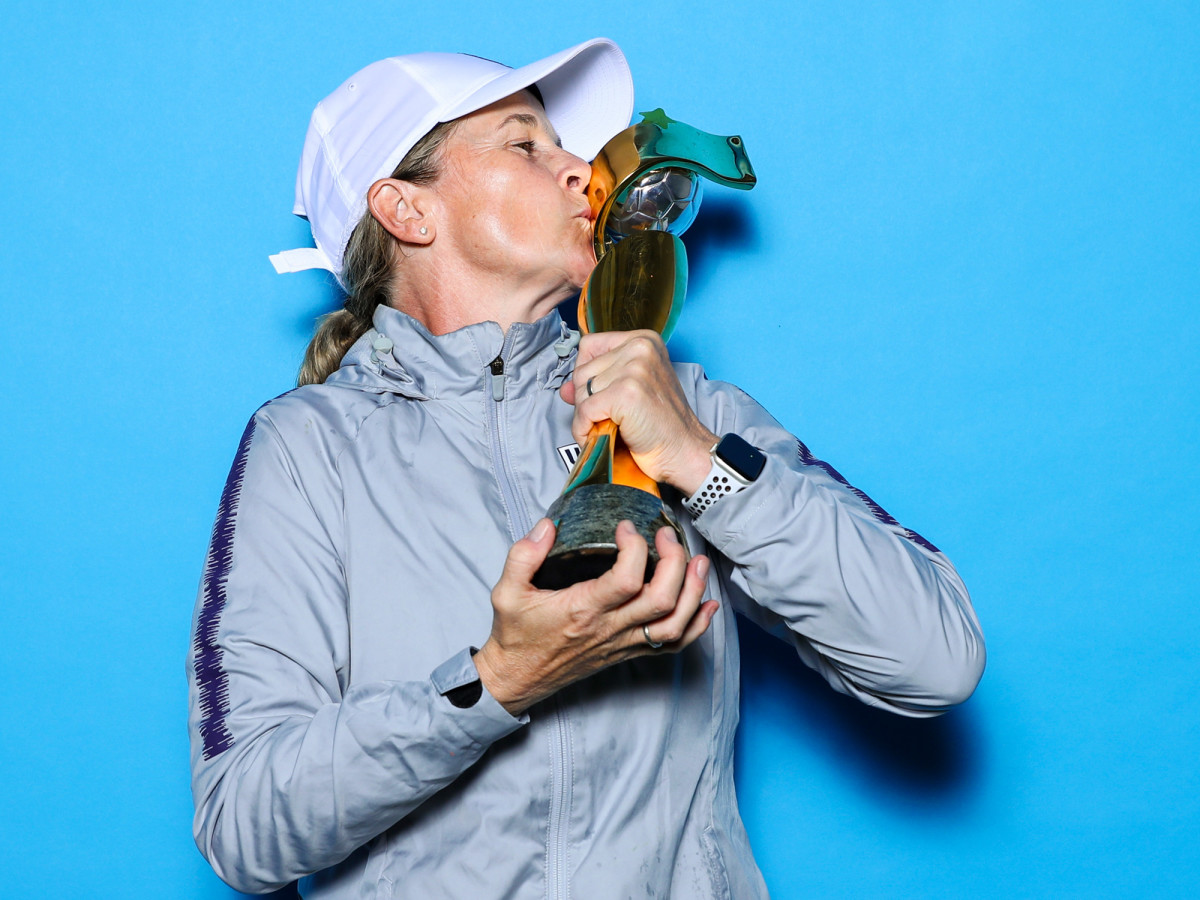
As Morgan added, “You have to give credit to Jill for looking at new things throughout the course of the last three years in order to see what the right direction was for us … When you have a chance to coach a team for two World Cups in a row, you’re able to learn a lot along the way, what worked and what didn’t. For Jill, it was a little bit of experimenting, and she did it in a way that a lot of people criticized. But at the same time, when you get to where we are now, you can’t help but applaud that.”
Yet even the U.S. players bristled at times during Ellis’s tinkering, and after a 1-0 home loss to Australia in July 2017 at the Tournament of Nations, several veterans went to then-federation president Sunil Gulati and told him they had deep concerns about the direction of the team under Ellis—and that if those concerns weren’t addressed they wanted a new coach. The players had specific issues with what they felt was Ellis’s lack of communication off the field and the team’s declining performances on the field. At a meeting several months later, Gulati responded to the team (with Ellis in the room) that she wasn’t going anywhere before World Cup 2019, and Gulati’s replacement, Carlos Cordeiro, kept Ellis in charge.
Winning has a way of easing tensions, however, and in 2018 the U.S. went undefeated as Ellis and assistant Tony Gustavsson, her offensive guru, landed on a 4-3-3 formation with an attacking style that was much more freewheeling than that of the 2015 World Cup-winning team. The linchpins were an explosive starting front line (Rapinoe, Morgan and Tobin Heath), an indispensable role in the defensive midfield for Ertz, and a remarkable depth (Carli Lloyd, Christen Press and Mallory Pugh as subs!) possessed by no other team on the planet. Concerns over the defense would continue into the World Cup, especially when it came to Hope Solo’s untested goalkeeping replacement, Alyssa Naeher, but Naeher proved herself when it mattered most by making two giant saves (one of them on a late penalty) in a 2-1 semifinal win against England.
As painful as Ellis’s experimenting was in 2017, it also unearthed some gems. One of the starters in the France debacle was a 21-year-old midfielder from Cincinnati named Rose Lavelle, who was making her second appearance with the national team.
“I got subbed out at halftime because I was pretty awful,” Lavelle said last week. “I remember thinking, ‘Wow, that’s like the top of the top. I need to get better, and that’s where I need to be in the next couple years if I want to compete for a spot on this team.’”
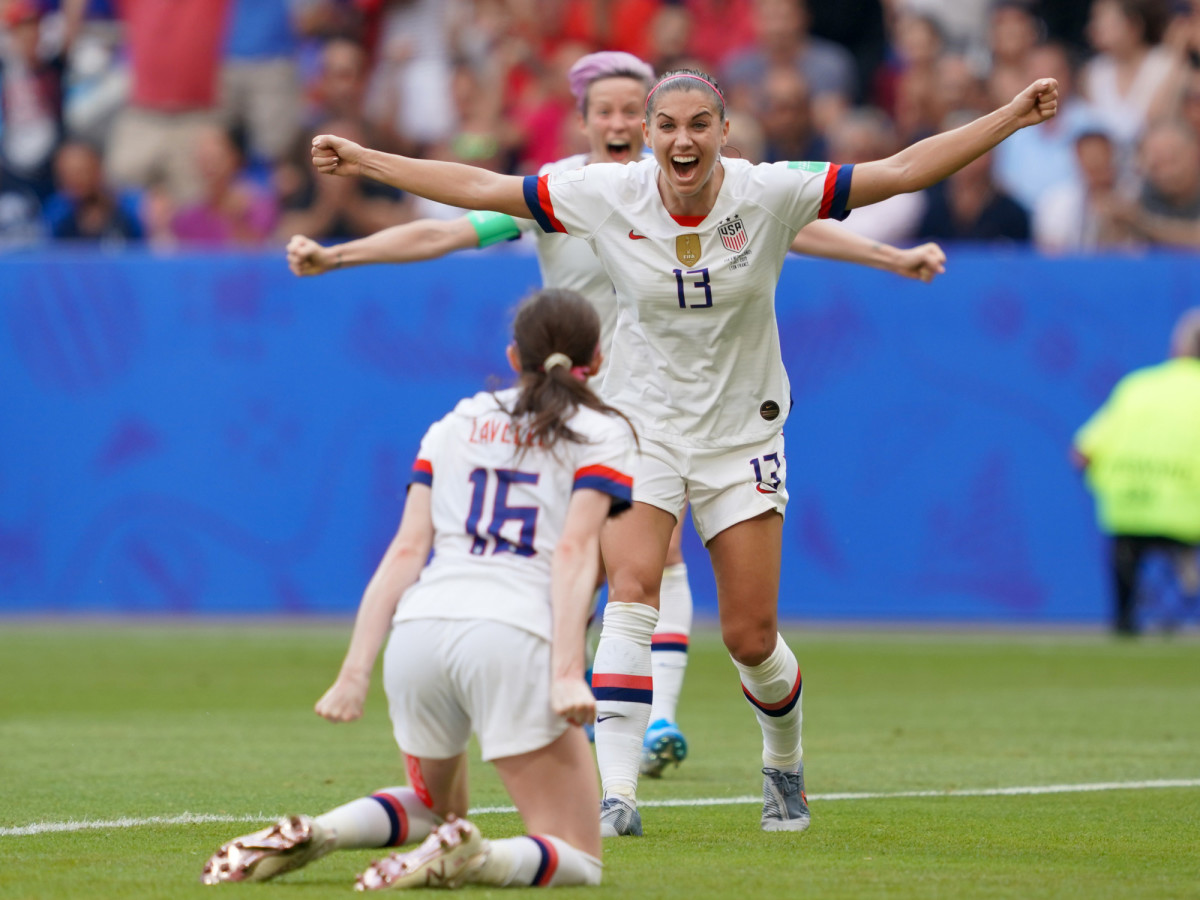
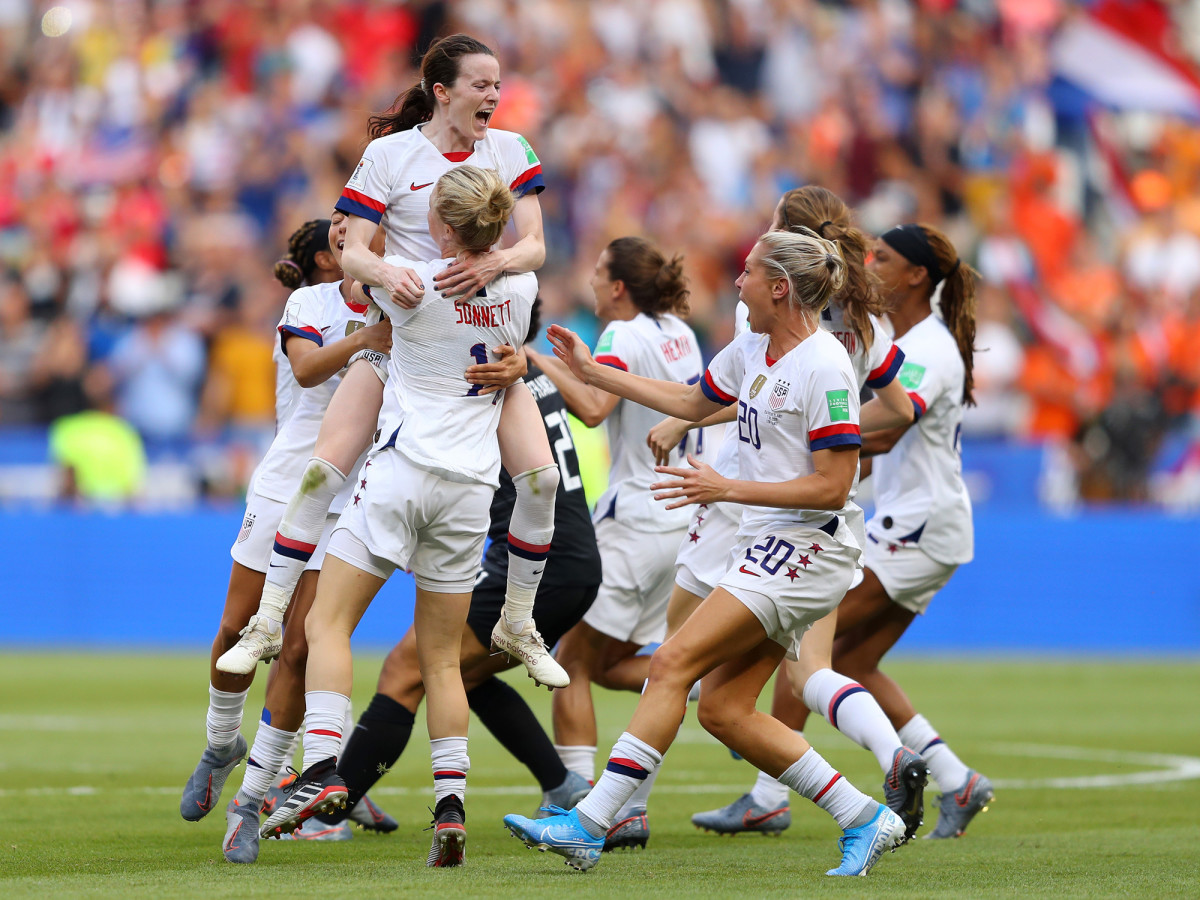
Now 24, Lavelle was the World Cup’s breakout star, the creative maestro on the U.S. team in both the semifinal and the final. Watching Lavelle in full flight on the ball is exhilarating, the kind of jolt that people will always pay real money to witness in person. In the 69th minute of Sunday’s final, she found herself on the ball with a half-acre of space in front of her and went to work, bamboozling Dutch defender Stefanie Van der Gragt to create room for her left-footed knockout punch.
“It’s so surreal that I just won a World Cup with people I grew up idolizing,” said Lavelle. “I can’t put it into words. It’s amazing.”
Last week was a vindication for Ellis, the first coach to win back-to-back Women's World Cup titles. She used nearly all the capital she had won in 2015 to remake her U.S. team after the Olympic failure, and that sometimes excruciating process paid off in France.
“Coming out of the Olympics, it was a moment to kind of reflect and look at making sure we played competitive games and increased our roster in terms of finding players like Rose Lavelle,” Ellis said last week. “Sometimes it’s part of the growing pains when you want to shift something. But full credit to the players. You build the system around them. They’re the gasoline that makes it work. That process was to get to this point with players in their right spots.”
Over the last three years, Ellis was especially supportive of her most Promethean players, even through long periods of injuries, whether they were Lavelle (hamstring), Heath (back) or Rapinoe (knee). Without them, the U.S. wouldn’t have won in France. As Foudy said, “Her most creative players, she has had a commitment to them to say, ‘I’m going to have patience. You’re going to get back.’ As a player it’s everything, especially at that level where it’s so cutthroat, it’s hard to feel confidence when you’re injured and away from the group. And Jill was willing to tinker. Sometimes you would hammer her for it, but you have to live through those moments to learn and grow. I think she’s been courageous in that way.”
But the 19ers, like the 91ers, the 99ers and the 15ers before them, will be known for far more than what they accomplished in 90-minute segments on a soccer field.
“The fabric of this national team,” Foudy said, “has always been it’s more than soccer.”
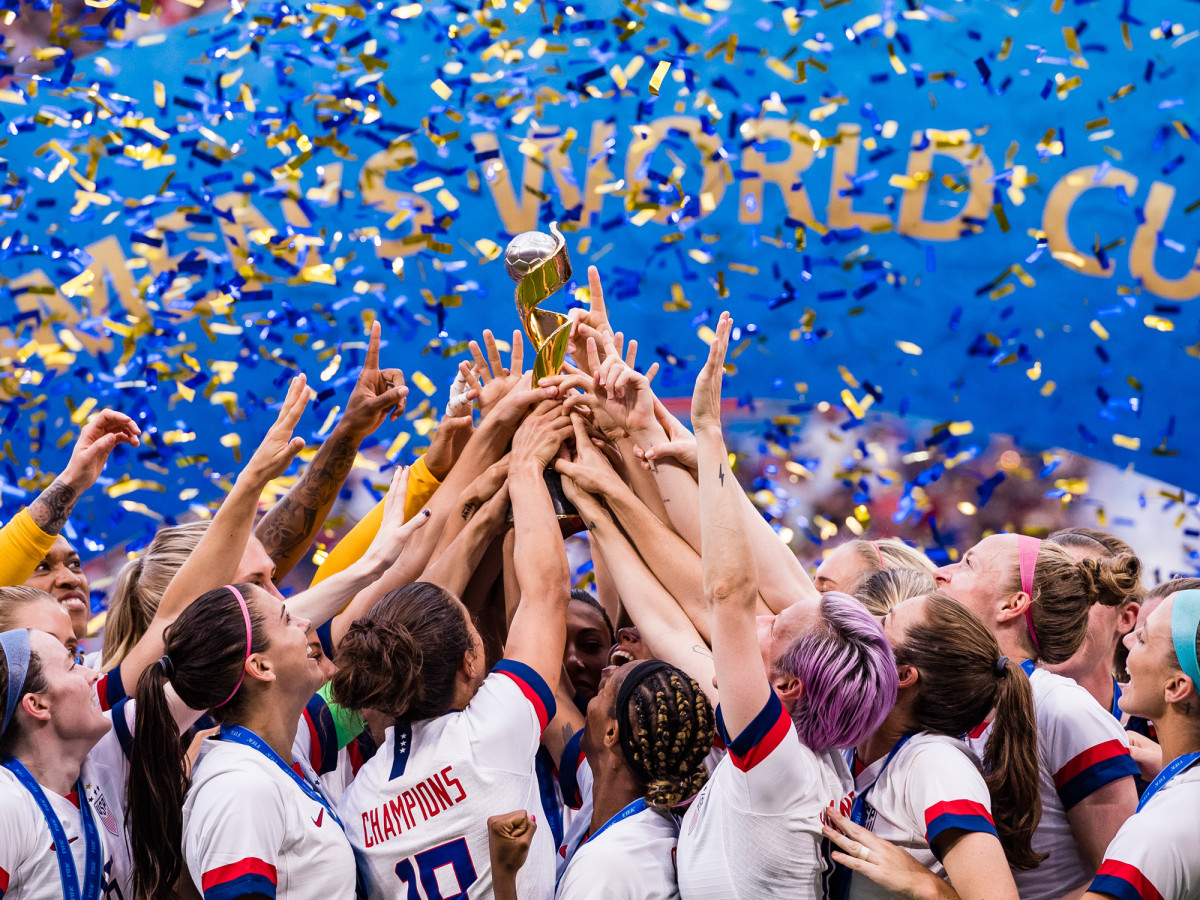
This World Cup produced record numbers of viewers for women’s soccer in countries around the world, including Brazil (where 35 million people watched the France-Brazil round-of-16 game), China, France, England, Italy, the Netherlands and Spain. The USWNT now has an impact there, too.
“In ’99, we envisioned this as a catalyst that would spark a global movement, but the reality is I think it was a domestic one,” said Foudy. “I see the 19ers as responsible for a global movement. We’re seeing the numbers, but even beyond that, they set an example for women on standards of expectations. There are so many countries who are finally standing up and saying this isn’t right, and they have the courage as a player to stand up in one of these countries and say, ‘This needs to be better, not just for us but for the next generation.’ I think a lot of that comes from them seeing this U.S. group do this at a level that’s unprecedented.”
Meanwhile, the public pressure on FIFA to invest more of its $2.7 billion in reserves in the women’s game, particularly from Rapinoe, appeared to be having an effect. Infantino announced last week a proposal to expand the Women’s World Cup from 24 to 32 teams, double the prize money to $60 million, double FIFA’s grassroots global investment in the women’s game to $1 billion and start a FIFA World League for women’s national teams and a FIFA Women’s Club World Cup. Rapinoe said it was promising, but she noted that his prize money proposal would mean the gap in prize money between the women and the men is actually increasing, not closing. After Rapinoe called out the FIFA president on Saturday, they had a brief conversation at the awards podium following the final.
“There was a wry smile,” Rapinoe said with a grin. “He did say he’d like to have a conversation, and I said I’d love to.”
That’s power. And after a World Cup that will put her in the canon of American athletic achievements, that’s Pinoe.
